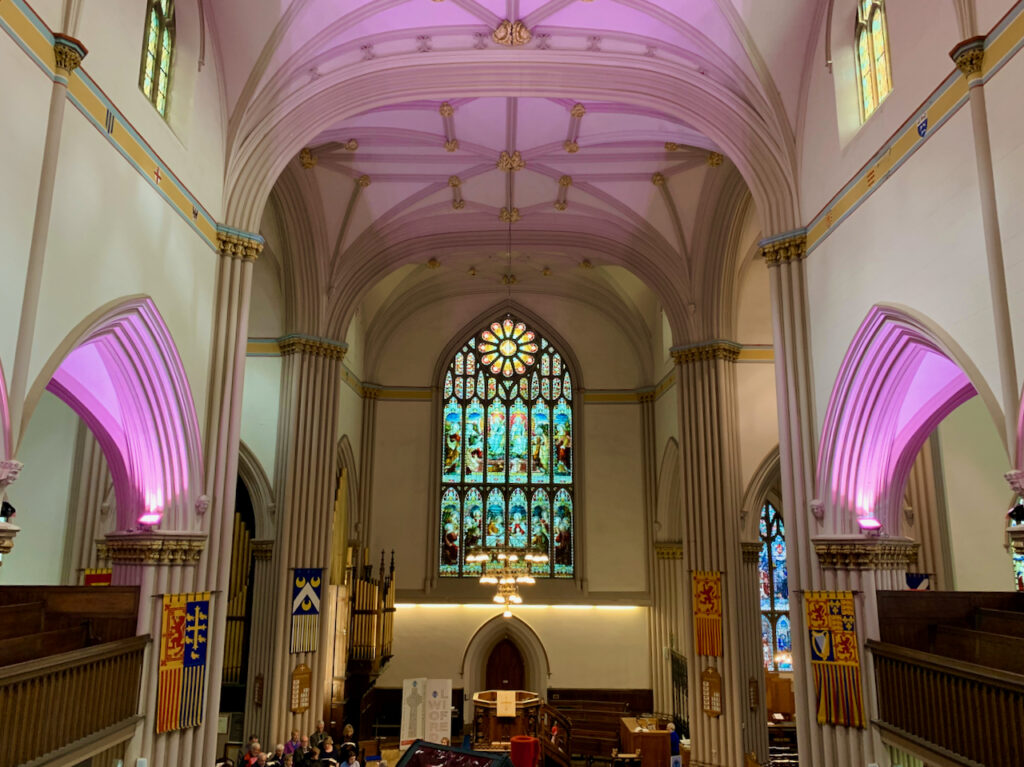The New Abbey Church of Dunfermline, built in 1821, is an excellent example of Gothic Revival architecture. Designed by William Burn of Edinburgh, the church was constructed on the site of the ruined medieval choir of the original abbey, which was lost after the Scottish Reformation. The building follows a cruciform plan, comprising a nave, transepts, and a chancel, and is oriented so that it lies immediately to the east of the surviving Romanesque nave of the original abbey.
The church exhibits the pointed arches, ribbed vaults, and vertical emphasis characteristic of the Gothic Revival style, providing a striking contrast to the Romanesque style of the adjacent medieval nave. Its floor plan forms a cross, with a prominent nave that is shorter than most due to the retained medieval nave to the west. This nave is flanked by transepts and culminates in a chancel to the east. The crossing tower is particularly notable, having been redesigned to incorporate the inscription “KING ROBERT THE BRUCE” — a reference to the royal tomb beneath the church, which was discovered during foundation work in 1818 and re-interred during the new construction.

